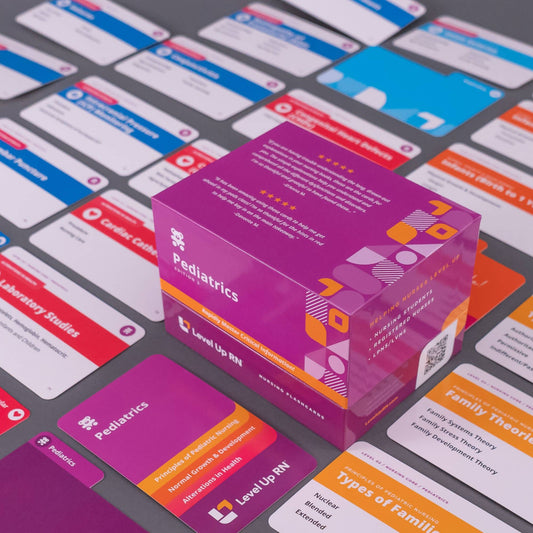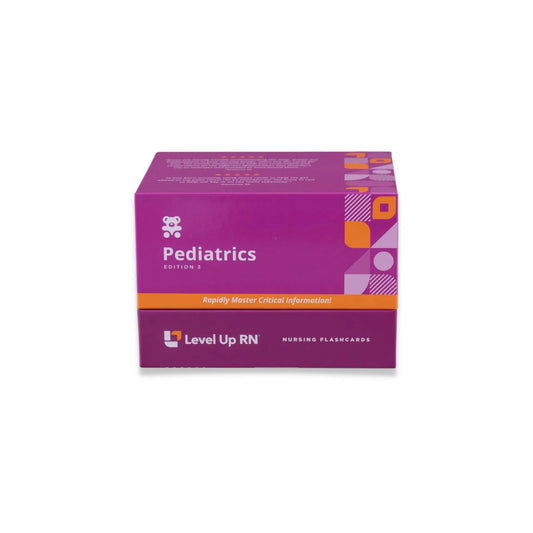Peds, part 45: Musculoskeletal Disorders - Juvenile Idiopathic Arthritis & Osteomyelitis
Updated: Cathy ParkesJuvenile idiopathic arthritis and osteomyelitis. The cause, signs/symptoms, diagnosis, treatment, and family teaching for juvenile idiopathic arthritis. The pathophysiology, risk factors, signs/symptoms, diagnosis, and treatment of osteomyelitis.
Full Transcript: Peds, part 45: Musculoskeletal Disorders - Juvenile Idiopathic Arthritis & Osteomyelitis
Full Transcript: Peds, part 45: Musculoskeletal Disorders - Juvenile Idiopathic Arthritis & Osteomyelitis
Hi, I'm Cathy with Level Up RN. In this video, I'll be covering juvenile idiopathic arthritis as well as osteomyelitis. And at the end of the video, I'm going to give you guys a little quiz to test your knowledge of some of the key points I'll be covering so definitely stay tuned for that. And if you have our Level Up RN pediatric nursing flashcards, definitely pull out your cards so you can follow along with me. Juvenile idiopathic arthritis is a chronic autoimmune disorder where the child's immune system attacks the joints causing inflammation and pain. In addition to joint pain, signs and symptoms include joint swelling, warmth, stiffness, especially in the morning, as well as decreased range of motion in the joint. There are several different types of juvenile idiopathic arthritis. Some types will also cause signs and symptoms such as a rash, lymphadenopathy, which is enlargement of the lymph nodes, as well as enlargement of the liver and spleen, and serositis, which is inflammation of the serous membranes. And this includes the membranes that line the lungs and the heart.
When it comes to diagnosing this condition, we want to rule out other causes of the patient's symptoms. Labs will show an increase in ESR and CRP due to inflammation, and then many children with juvenile idiopathic arthritis will have a positive ANA test. So this is an antinuclear antibody test. In terms of imaging, an X-ray, MRI, and/or ultrasound can also be used. Medications used in the treatment of juvenile idiopathic arthritis include NSAIDs and corticosteroids to decrease inflammation and pain. Disease-modifying antirheumatic drugs such as methotrexate may also be prescribed to suppress the patient's immune system. Physical therapy and occupational therapy will also be part of the child's treatment plan, and the physical therapist or occupational therapist may recommend splinting of painful joints. In terms of family teaching, we should encourage the use of moist heat, so a warm shower to relieve joint stiffness, and then a firm mattress is typically recommended for a child with juvenile idiopathic arthritis.
Moving on to osteomyelitis now. Osteomyelitis is a bone infection that causes inflammation, edema, and decreased blood flow to the bone, which results in bone necrosis or death of the bone tissue. Risk factors that increase the risk for osteomyelitis include trauma, such as an open fracture, bacteremia, which is the presence of bacteria in the bloodstream, as well as a recent orthopedic surgery, especially if metal plates or rods are placed in the bone. Signs and symptoms of osteomyelitis include bone pain, erythema, edema, and fever. It will also cause an increase in white blood cells. An X-ray and bone scan can be used to diagnose this disorder. And treatment includes long-term antibiotic therapy. So I've cared for a lot of patients with osteomyelitis, and many of them require IV antibiotics that are administered through a PICC line over four to six weeks. Some patients may require surgical debridement of the bone, and then hyperbaric oxygen therapy is another option when it is available.
All right, it's quiz time. Who's excited? I've got three questions for you. Question number one, how can a child with juvenile idiopathic arthritis relieve joint stiffness? The answer is with moist heat, such as a warm shower. Question number two, an open fracture places a patient at risk for osteomyelitis. True or false? The answer is true. Question number three, osteomyelitis is treated with a one-week course of oral antibiotics. True or false? The answer is false. Osteomyelitis requires long-term antibiotic therapy and IV antibiotics are often required. All right, I hope this video has been helpful for you. Take care, and good luck with studying, and thank you so much for watching.


